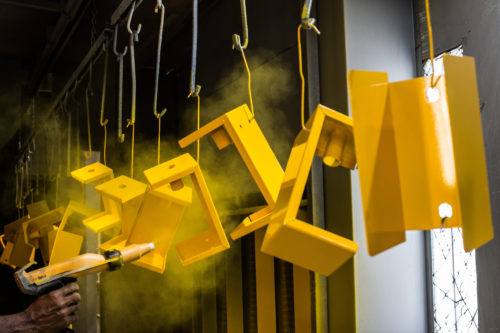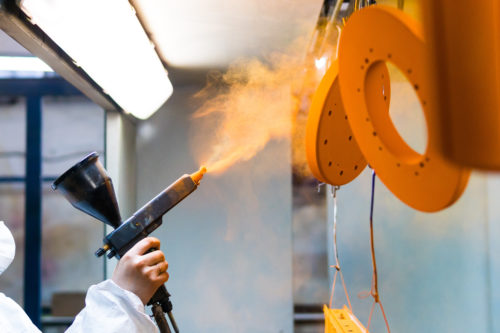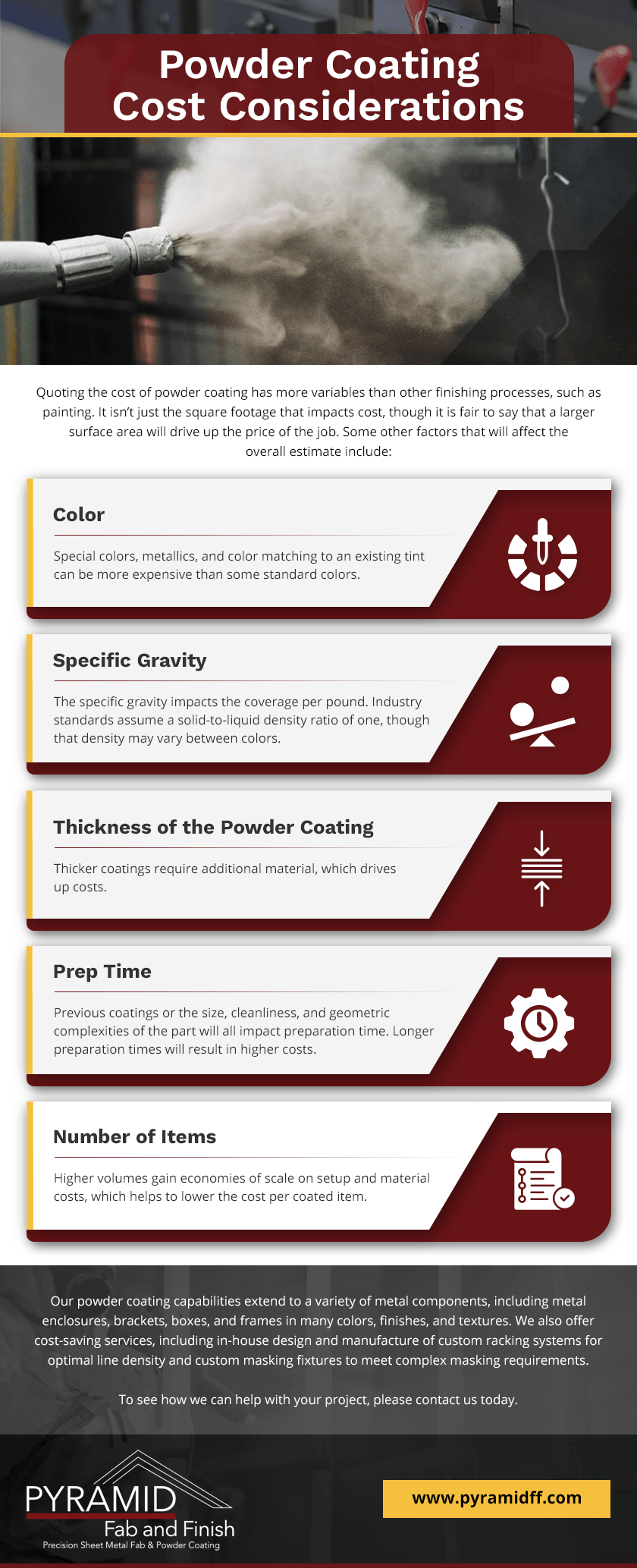Powder Coating vs. Painting
While powder coating and painting may seem like purely aesthetic practices at first glance, surface finishing is a critical component of building robust products. Materials like ductile iron, carbon steel, and other reactive metals will corrode if left uncovered in the elements, so an exterior coating provides an essential added layer of protection.
Powder coating and painting are two strategies for achieving this protection against the elements, each with its own unique benefits and downfalls. Although both processes share many common features, including pigments, resins, and additives, wet paint contains solvent while powder coating does not. This one difference is what makes paint a liquid and powder coating a solid, a distinction that leads to unique application styles, textures, durability, and personnel requirements.
Contact Us
What is the Difference Between Powder Coating and Paint?
Powder coating is a powder that contains pigments and resins which a skilled technician can apply to any surface using electrostatic spray. This deposition system attracts the particles to the object’s surface, then seals in the coating with heat. Although this process tends to be more expensive and requires more specialized training than paint, it offers a few key benefits.
The excess powder can be reused, making the process more sustainable and efficient than painting, and only one coat is required. Additionally, applying a powder coating is generally regarded as safer than paint—it omits any potentially harmful volatile organic compounds (VOCs) that painting tends to release into the air, some of which have been known to cause headaches, nervous system damage, and even cancer. Unlike paint, powder coating is not flammable, which makes storage simpler and safer.
Should You Choose Powder Coating or Painting?
Like any manufacturing consideration, choosing between powder coating and painting will depend heavily on your intended use. There are, however, a few key positives and negatives to keep in mind when choosing between powder coating and painting.
In addition to being safer and more efficient, powder coating is also more uniform than painting. The electrostatic deposition process, which negatively charges the powder to attract it to the application surface, ensures even distribution of the powder coating across the product, and the subsequent curing process allows the coat to set into a hard, uniform exterior. Painting requires much more time and effort to reach the same level of uniformity, and successful industrial painting often requires enlisting a highly trained professional to combat drips and sags. You can also create textured surfaces with powder coating much more easily than with paint.
Finally, a powder coat is more resistant to scratches, chips, and other common sources of wear and tear. When crafting outdoor products or components that will undergo chemical or material stress, mitigating chipping and scratching is key to preventing rust and decay. Even for low-stress applications, the powder coating’s thicker layers and strong thermal bonds help preserve the color and texture of your product over time. Sunlight, moisture, and other environmental exposures will break down both paint layers and powder coating over time, a process known as “chalking,” but powder coating’s tough material properties slow down the rate of decay.
Powder Coating Services from Pyramid Fab & Finish
Powder coating is a powerful alternative to traditional painting for many industrial applications, especially those that need high protection from the elements, a smooth and hard finish, an efficient application process, or safe exposure and storage. While there is no universal answer to the powder coating vs painting debate, powder coating’s electrostatic deposition application process provides a host of benefits that will enhance your product’s lifespan, durability, color, and more. If these advantages sound like they might benefit your product, get in touch with our team at Pyramid Fab & Finish to discuss custom powder coating solutions today.




